- Home
- Nathaniel Hawthorne
The Portable Hawthorne (Penguin Classics)
The Portable Hawthorne (Penguin Classics) Read online
Table of Contents
Title Page
Copyright Page
Introduction
I - THE TALES 1830-1852
EDITOR’S NOTE
MY KINSMAN, MAJOR MOLINEUX 1832
ROGER MALVIN’S BURIAL 1832
YOUNG GOODMAN BROWN 1835
THE MINISTER’S BLACK VEIL - A PARABLE 1836
THE MAN OF ADAMANT - AN APOLOGUE 1837
THE BIRTH-MARK 1843
RAPPACCINI’S DAUGHTER - FROM THE WRITINGS OF AUBÉPINE 1844
PREFACES - FROM “THE old MANSE” 1846
TO TWICE-TOLD TALES 1851
TO THE SNOW-IMAGE 1852 - To Horatio Bridge, Esq., U.S.N.
II - THE SCARLET LETTER 1850
EDITOR’S NOTE
I - THE PRISON-DOOR
II - THE MARKET-PLACE
III - THE RECOGNITION
IV - THE INTERVIEW
V - HESTER AT HER NEEDLE
VI - PEARL
VII - THE GOVERNOR’S HALL
VIII - THE ELF-CHILD AND THE MINISTER
IX - THE LEECH
X - THE LEECH AND HIS PATIENT
XI - THE INTERIOR OF A HEART
XII - THE MINISTER’S VIGIL
XIII - ANOTHER VIEW OF HESTER
XIV - HESTER AND THE PHYSICIAN
XV - HESTER AND PEARL
XVI - A FOREST WALK
XVII - THE PASTOR AND HIS PARISHIONER
XVIII - A FLOOD OF SUNSHINE
XIX - THE CHILD AT THE BROOK-SIDE
XX - THE MINISTER IN A MAZE
XXI - THE NEW ENGLAND HOLIDAY
XXII - THE PROCESSION
XXIII - THE REVELATION OF THE SCARLET LETTER
XXIV - CONCLUSION
III - THE PUBLISHED ROMANCES 1851-1860
EDITOR’S NOTE
FROM THE HOUSE OF THE SEVEN GABLES 1851
FROM THE BLITHEDALE ROMANCE 1852
FROM THE MARBLE FAUN 1860
IV - THE EUROPEAN JOURNALS 1853-1860
EDITOR’S NOTE
FROM THE ENGLISH, FRENCH, AND ITALIAN JOURNALS
V - THE LAST YEARS 1860-1864
EDITOR’S NOTE
PASSAGES FROM THE LETTERS AND THE UNFINISHED ROMANCES
Suggestions for Further Reading
THE PORTABLE HAWTHORNE
Best known today for his enigmatic tales and the short novel called The Scarlet Letter, NATHANIEL HAWTHORNE was born in Salem, Massachusetts, at the dawn of the nineteenth century. After graduating from Bowdoin College, in 1825, he published his first romance, Fanshawe, and, when that failed, turned to writing short stories and prose sketches that, over the next two decades, gradually made him known in America and England. The Scarlet Letter appeared in 1850, followed soon after by The House of the Seven Gables and The Blithedale Romance, each of which increased his international renown. The next seven years he spent with his family in Europe, first as U.S. consul in Liverpool, then as a resident tourist on the Continent. Just prior to the publication of The Marble Faun, his last completed romance, he returned to his home in Concord, Massachusetts, where he spent the remaining four years of his life preparing excerpts from his English journals for publication while trying, unsuccessfully, to finish two more romances, based in part on his years in Europe. After a period of declining health, he died before his sixtieth birthday, while traveling in New Hampshire with his old college friend Franklin Pierce.
WILLIAM c. SPENGEMANN is the Hale Professor in Arts and Sciences and Professor of English Emeritus at Dartmouth College. His books include Mark Twain and the Backwoods Angel, The Adventurous Muse, The Forms of Autobiography, A Mirror for Americanists, and A New World of Words. He is also the editor of three Penguin Classics: Henry James’s The American, Herman Melville’s Pierre, and, with Jessica F. Roberts, Nineteenth Century American Poetry.
PENGUIN books
Published by the Penguin Group
Penguin Group (USA) Inc., 375 Hudson Street, New York, New York 10014, U.S.A.
Penguin Group (Canada), 90 Eglinton Avenue East, Suite 700, Toronto, Ontario, Canada M4P 2Y3
(a division of Pearson Penguin Canada Inc.)
Penguin Books Ltd, 80 Strand, London WC2R 0RL, England
Penguin Ireland, 25 St Stephen’s Green, Dublin 2, Ireland (a division of Penguin Books Ltd)
Penguin Group (Australia), 250 Camberwell Road, Camberwell, Victoria 3124, Australia
(a division of Pearson Australia Group Pty Ltd)
Penguin Books India Pvt Ltd, 11 Community Centre, Panchsheel Park, New Delhi-110 017, India
Penguin Group (NZ), cnr Airborne and Rosedale Roads, Albany, Auckland 1310, New Zealand
(a division of Pearson New Zealand Ltd)
Penguin Books (South Africa) (Pty) Ltd, 24 Sturdee Avenue, Rosebank,
Johannesburg 2196, South Africa
Penguin Books Ltd, Registered Offices:
80 Strand, London WC2R 0RL, England
This edition first published in Penguin Books 2005
Selection, introduction and notes copyright © Penguin Group (USA) Inc., 2005
All rights reserved
The text of the selections in this book is that established by The Centenary Edition of the Works of
Nathaniel Hawthorne published by the Ohio State University Center for Textual Studies and Ohio State
University Press. The selections are from the volumes entitled The Scarlet Letter, The House of the
Seven Gables, The Blithedale Romance and Fanshawe, The Marble Faun, The American Notebooks,
Twice-Told Tales, Mosses from an Old Manse, The Snow Image and Uncollected Tales, The American
Claimant Manuscripts, The French and Italian Notebooks, The Letters 1857-1864, The English
Notebooks 1853-1856, and The English Notebooks 1856-1860. Copyright © 1962, 1964, 1965,
1968, 1972, 1974, 1977, 1980, 1987, 1997 by Ohio State University Press. All rights reserved.
Illustrations from Portraits of Nathaniel Hawthorne by Rita K. Gollin,
Northern Illinois University Press, 1983.
LIBRARY OF CONGRESS CATALOGING IN PUBLICATION DATA
Hawthorne, Nathaniel, 1804-1864.
[Selections. 2005]
The portable Hawthorne / edited with an introduction by William C. Spengemann.
p. cm.
Includes bibliographical references (p. ).
eISBN : 978-1-101-01042-6
I. Spengemann, William C. II. Title.
PS1852.S66 2005
813’.3—dc22 2004065791
The scanning, uploading and distribution of this book via the Internet or via any other means without
the permission of the publisher is illegal and punishable by law. Please purchase only authorized
electronic editions, and do not participate in or encourage electronic piracy of copyrighted materials.
Your support of the author’s rights is appreciated.
http://us.penguingroup.com
Introduction
Hawthorne’s autobiographical preface to Mosses from an Old Manse, ambiguously subtitled “The Author Makes the Reader Acquainted with His Abode,” opens with the following paragraph:Between two tall gate-posts of rough-hewn stone, (the gate itself having fallen from its hinges, at some unknown epoch,) we beheld the gray front of the old parsonage, terminating the vista of an avenue of black-ash trees. It was now a twelvemonth since the funeral procession of the venerable clergyman, its last inhabitant, had turned from that gate-way towards the village burying-ground. The wheel-track, leading to the door, as well as the whole breadth of the avenue, was almost overgrown with grass, affording dainty mouthfuls to two or three
vagrant cows, and an old white horse, who had his own living to pick up along the roadside. The glimmering shadows, that lay half-asleep between the door of the house and the public highway, were a kind of spiritual medium, seen through which, the edifice had not quite the aspect of belonging to the material world. Certainly it had little in common with those ordinary abodes, which stand so imminent upon the road that every passer-by can thrust his head, as it were, into the domestic circle. From these quiet windows, the figures of passing travellers looked too remote and dim to disturb the sense of privacy. In its near retirement, and accessible seclusion, it was the very spot for the residence of a clergyman; a man not estranged from human life, yet enveloped, in the midst of it, with a veil woven of intermingled gloom and brightness. It was worthy to have been one of the time-honored parsonages of England, in which, through many generations, a succession of holy occupants pass from youth to age, and bequeath each an inheritance of sanctity to pervade the house and hover over it, as with an atmosphere.
As a way of introducing his subject, the old parsonage in Concord, Massachusetts, where he and Sophia went to live following their marriage, the passage seems fairly routine. Looked at closely, however, it can be seen to begin and end in quite different situations and stylistic keys. In the first three sentences, the speaker stands, alongside one or more unnamed companions, at the entry to the cart path that leads away toward the house, off in the distance. What he sees from this vantage point—gateposts, some trees, two or three cows, an old horse—might be seen by anyone who stood beside him, as, indeed, the reader is invited to do. The objects named are what the speaker says they are, nothing more. They do not ask to be taken, the way things in Hawthorne’s stories and notebooks so often do, as “emblematic of something.”
By the sixth sentence, however, the speaker’s situation has changed. Somehow, he has moved inside the house. Now seemingly alone, he looks out the front windows, back at the public highway, where he stood just moments before. Out there, he sees some “passing travellers.” Are they his former companions? Is he, perhaps, still standing among them, still looking up the driveway at the “gray front” of the house? He does seem to be a rather different person now: talking to himself, rather than to the reader, and pondering such meanings as might lie hidden in his new “abode,” or be lent to it, instead of describing its appearance. At first, the house sat before the speaker’s eyes. Now it seems to lie inside his head—to be his head, in fact, its windows his eyes. Out on the road, in the “material world,” gateposts were just gateposts. Here in this dusky interior, removed as it is from “ordinary” existence by “the glimmering shadows” in the middle distance, everything seems “emblematic of something” immaterial, although what that “something” might be in a case like that “veil woven of intermingled gloom and brightness” would not be easy to say.
What we have here are two very different ways of writing: one that Hawthorne called “the style of a man of society” and one he called “the talk of a secluded man with his own mind and heart.” The former style, he explains in another preface, “has none of the abstruseness of idea, or obscurity of expression” that suffuses the secluded style. Writings of this open, public sort may be imbued with an atmosphere of the “moral picturesque” or touched here and there with a gentle irony, but they “never need translation” into more explicit terms. On the contrary, anything written in this outgoing style “may be understood and felt by anyone who will give himself the trouble to read it.”
Those who trouble to read Hawthorne’s writings in his esoteric style, however, have their work cut out for them. Obscurely figurative, rather than transparently literal, these “written communications of a solitary mind with itself” always “need translation” into plain language. Seeming always to mean something else, they fairly beg to be interpreted, although no interpretation ever manages, quite, to empty them of meaning.
Attempts at translation are always worthwhile, though, for of the two styles this one has the potential to be “profound” and hence to become “deeply and permanently valuable.” What Hawthorne called his “photographic” style might serve “to open an intercourse with the world,” but only his “thoughtful or imaginative” style would do for a writer who, like himself, is “burrowing to his utmost ability into the depths of our common nature . . . and who pursues his researches in that dusky region, as he needs must, as well by the tact of sympathy as by the light of observation.”
These two very different voices might be said to bespeak two different “Hawthornes”: the one known to his family and friends, and one that, except as “shadowed forth” in his emblematic fictions, remained hidden from all inquiring eyes, even, it seems, from his own. One of his acquaintances doubtless spoke for many others when he confessed, “I love Hawthorne. I admire him; but I do not know him. He lives in a mysterious world of thought and imagination which he never permits me to enter.” Hawthorne felt this division in himself no less sharply. In a letter written before their marriage, he told Sophia his idea of recording a single day, first, in his “external” life and then in his “inward” life. “Nobody,” he said, “would think that the same man could live two such different lives simultaneously.”
Had he written those parallel diaries for Sophia, he would have had to use for the first his public style and for the second his private, emblematic style. All “talk about his external habits . . . and other matters entirely upon the surface,” he insisted, “hide the man instead of displaying him.” Anyone at all curious to learn anything “essential” about him “must make quite another sort of inquest, and look through the whole range of his [imagined] characters, good and evil.”
Those who did seek him there often found the view disturbing. When his son, Julian, grew old enough to read the tales, he could not recognize in them the man he had known as his father. Even Hawthorne himself sometimes found that persona strange. Looking over the tales he had chosen for one of his collections, he told his publisher, “My past self is not very much to my taste, as I see it in this book.” He must have known at the time, he supposed, what the tales were intended to mean; but reading them now, through the outward-looking eyes of the “man of society,” he could neither recall what that was nor recover it from the words on the printed page.
Two styles—one transparently circumstantial, the other enigmatically portentous—bespeaking two Hawthornes, the first a popular journalist, the second a withdrawn poet: in the light of this duality, his whole career can be traced, from Fanshawe, his first known publication, to Our Old Home, the last of his writings he saw in print, and the excerpts from an unfinished, unfinishable work that appeared under the title “Scenes from ‘The Dolliver Romance,’ ” shortly after his death. When the career is surveyed in these terms, a number of critical issues come into somewhat clearer focus: his reasons for suppressing Fanshawe; the differences among the one hundred or so short pieces he published in periodicals between 1830, when he took up that form, and 1852, when he abandoned it; the unmatched power of The Scarlet Letter; the dissipation of that force in the romances he published thereafter; the abrupt change in his notebooks and journals, beginning around 1850; and his inability to finish another romance after The Marble Faun, even as he went on publishing successful journalism.
Then, too, when read in this light, and in the order of their publication, his writings tell a coherent, memorable story, instead of merely huddling together under two covers, the way selections for anthologies like this one are apt to do. It is a classic sort of tale, with a rising action, a resounding climax, a falling action, and a conclusion “of intermingled gloom and brightness.” As in so many of his own stories, the main character here is an artist possessed of magical powers and given to rash undertakings that lead to ambiguous conclusions.
Just where this story begins is somewhat unclear. When Hawthorne was seventeen and away at school, he asked his mother in a letter what she would say to his becoming a writer. The earliest evidence we have of his actua
lly being one, however, appeared three years after his graduation from Bowdoin college, with the publication of Fanshawe, which he may have begun there. In any case, he had the novel printed anonymously, at his own expense, and then withdrew it almost immediately, never to mention it again. Even his wife learned of it only after his death.
Why he repudiated this story can only be guessed, but it seems that the literal, if somewhat affected, style of the narrative will not get at a subject that keeps cropping up along the way, only to be dismissed each time: the consequences, good as well as bad, that might result from a beautiful young woman’s fall from virtue. This devilish theme, it appears, could be handled only with emblematic tongs.
For the next couple of decades, Hawthorne divided his considerable energies between hack writing (including a half-dozen books for children) and the production of short pieces for annual gift books, monthly magazines, and newspapers. These short pieces fall into three more or less distinct categories. There are “sketches,” like “My Visit to Niagara” and “The Old Apple-Dealer,” snapshots of picturesque scenes and characters rendered in his “photographic” style and tinted with conscious “artistry.” Then there are “allegories” like “The Celestial Railroad” and “Earth’s Holocaust,” moral lessons hiding in plain sight behind fictional stage settings. Last come Hawthorne’s “tales,” imagined stories like “Young Goodman Brown” and “Rappaccini’s Daughter,” involving fictive characters in emblematic situations and told entirely in the secretive, poetic style. While the sketches mean little if anything more than they say outright, and the allegories put fiction at the service of meanings statable in their own terms, the tales strive, through fictive actions, with uncertain success, to uncover the meanings buried within them.

 The Scarlet Letter
The Scarlet Letter Young Goodman Brown : By Nathaniel Hawthorne - Illustrated
Young Goodman Brown : By Nathaniel Hawthorne - Illustrated The Birthmark
The Birthmark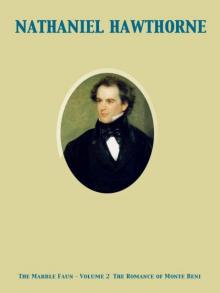 The Marble Faun; Or, The Romance of Monte Beni - Volume 1
The Marble Faun; Or, The Romance of Monte Beni - Volume 1 The Minister's Black Veil
The Minister's Black Veil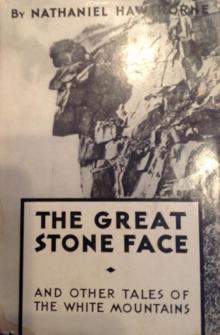 The Great Stone Face, and Other Tales of the White Mountains
The Great Stone Face, and Other Tales of the White Mountains The House of the Seven Gables
The House of the Seven Gables The Snow Image
The Snow Image The Blithedale Romance
The Blithedale Romance Rappaccini's Daughter: By Nathaniel Hawthorne - Illustrated
Rappaccini's Daughter: By Nathaniel Hawthorne - Illustrated Twice-Told Tales
Twice-Told Tales Twice Told Tales
Twice Told Tales The Marble Faun; Or, The Romance of Monte Beni - Volume 2
The Marble Faun; Or, The Romance of Monte Beni - Volume 2_preview.jpg) Footprints on the Sea-Shore (From Twice Told Tales)
Footprints on the Sea-Shore (From Twice Told Tales) Main Street
Main Street_preview.jpg) The Seven Vagabonds (From Twice Told Tales)
The Seven Vagabonds (From Twice Told Tales) Fanshawe
Fanshawe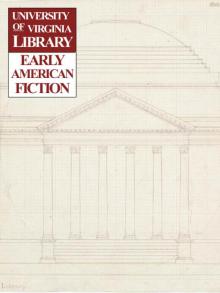 Chippings with a Chisel
Chippings with a Chisel Selected Tales and Sketches
Selected Tales and Sketches Young Goodman Brown
Young Goodman Brown Roger Malvin's Burial
Roger Malvin's Burial The Prophetic Pictures
The Prophetic Pictures The Village Uncle
The Village Uncle Scarlet Letter (Barnes & Noble Classics Series)
Scarlet Letter (Barnes & Noble Classics Series) The Procession of Life
The Procession of Life Drowne's Wooden Image
Drowne's Wooden Image Hawthorne's Short Stories
Hawthorne's Short Stories My Kinsman, Major Molineux
My Kinsman, Major Molineux Legends of the Province House
Legends of the Province House Foot-Prints on the Sea-Shore
Foot-Prints on the Sea-Shore The Haunted Quack
The Haunted Quack Tanglewood Tales
Tanglewood Tales The Seven Vagabonds
The Seven Vagabonds Mosses from an Old Manse, Volume 2
Mosses from an Old Manse, Volume 2 The Canterbury Pilgrims
The Canterbury Pilgrims Wakefield
Wakefield The Gray Champion
The Gray Champion The White Old Maid
The White Old Maid The Snow-Image: A Childish Miracle
The Snow-Image: A Childish Miracle The Gentle Boy
The Gentle Boy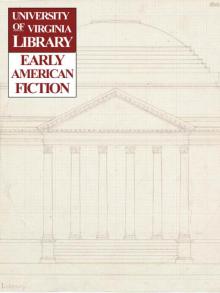 Mr. Higginbotham's Catastrophe
Mr. Higginbotham's Catastrophe![The Threefold Destiny: A Fairy Legend, by Ashley Allen Royce [pseud.] Read online](http://i1.bookreadfree.com/i2/04/10/the_threefold_destiny_a_fairy_legend_by_ashley_allen_royce_pseud__preview.jpg) The Threefold Destiny: A Fairy Legend, by Ashley Allen Royce [pseud.]
The Threefold Destiny: A Fairy Legend, by Ashley Allen Royce [pseud.] Lady Eleanore`s Mantle
Lady Eleanore`s Mantle The Great Carbuncle
The Great Carbuncle The Portable Hawthorne (Penguin Classics)
The Portable Hawthorne (Penguin Classics)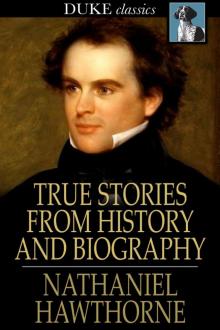 True Stories from History and Biography
True Stories from History and Biography